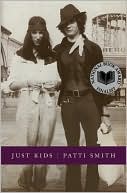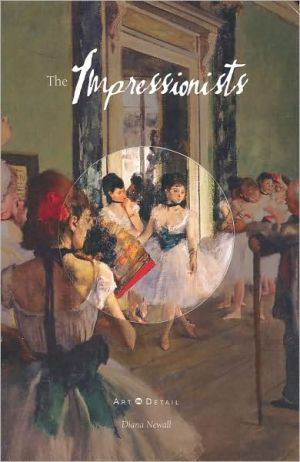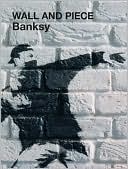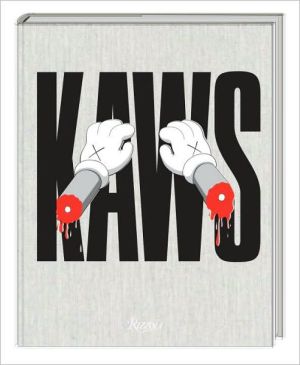Art Held Hostage: The Battle over the Barnes Collection
This is the story of how a fabled art foundation -- the greatest collection of impressionist and postimpressionist art in America -- came to be, and why it is now, thanks to more than a decade of legal squabbling, on the brink of financial collapse. The Barnes Collection has been conservatively valued at more than $6 billion and includes some 69 Cezannes (more than in all the museums of Paris combined), 60 Matisses, 44 Picassos, 18 Rousseaus, 14 Modiglianis, and no fewer than 180 Renoirs. Yet...
Search in google:
The battle for control of America's greatest private art collection.The New York TimesIn 1951, the endowment of the Barnes Foundation was $9 million, equivalent to about $62 million today. Corruption, bungling, greed and changing financial standards have depleted it; now, there is no endowment left. Art Held Hostage -- a morality play masquerading as a legal thriller -- tells us what went wrong. Part of the problem was Barnes's indenture, which mandated investment only in government securities; its terms were responsible for the endowment's contraction by about 80 percent (in inflation-adjusted terms). But the total depletion of the museum's coffers owes much to the interplay of racial, local and personal politics. — Andrew Solomon
AcknowledgmentsixIntroduction: This Paradise of Art1Chapter 1Portrait of Dr. Barnes7Chapter 2De Medici in Merion31Chapter 3The Mysterious Miss de Mazia48Chapter 4Lincoln Takes Command57Chapter 5Meet Richard Glanton73Chapter 6Into the Brightness of the Future85Chapter 7The Subject Was Chest Hair97Chapter 8Trying to Reform Richard105
\ The New York TimesIn 1951, the endowment of the Barnes Foundation was $9 million, equivalent to about $62 million today. Corruption, bungling, greed and changing financial standards have depleted it; now, there is no endowment left. Art Held Hostage -- a morality play masquerading as a legal thriller -- tells us what went wrong. Part of the problem was Barnes's indenture, which mandated investment only in government securities; its terms were responsible for the endowment's contraction by about 80 percent (in inflation-adjusted terms). But the total depletion of the museum's coffers owes much to the interplay of racial, local and personal politics. — Andrew Solomon\ \ \ \ \ Publishers WeeklyDr. Albert Barnes pulled himself out of poverty at a young age, eventually becoming a pharmaceutical tycoon and snapping up art treasures during Depression fire sales. At the end of his combative life, Barnes, who changed his will to match his mercurial moods, left the collection not to his alma mater, the University of Pennsylvania, but to Lincoln University, a once-acclaimed African-American institution that had produced graduates such as Langston Hughes before seeing its reputation and enrollment decline. Located in the Main Line suburb of Philadelphia, the collection is currently worth more than $6 billion and contains masterworks by Picasso, Renoir and Matisse. A deputy editor of American Lawyer magazine, Anderson turns his keen eye to the struggle for power over the collection that has been waged since Barnes's death in 1951. At the center of the conflict is lawyer Richard Glanton, who as president of the Barnes during the 1990s launched a costly lawsuit alleging racial discrimination against the township that houses the collection, put paintings from the collection on tour despite Barnes's "no tour" clause to his gift and pondered the once unthinkable tactic of selling paintings from the collection to raise additional funds. Glanton's one-time ally in behind-the-scenes power plays, Lincoln University president Niara Sudarkasa, found herself helming an institution unprepared for the responsibilities of the collection and was later embroiled in her own legal troubles stemming from spending practices at the university. Through detailed storytelling and insightful interviews with key players (shown in 16 pages of b&w photos), Anderson vividly depicts the downfall of now-enemies Glanton and Sudarkasa and the devastating financial impact of their power struggles on the foundation itself. Anyone interested in the intersection of art, race and power politics will find this tale engrossing-and depressing. East Coast author tour. (May) Copyright 2003 Cahners Business Information.\ \ \ Library JournalIn this fast-paced legal drama, Anderson (deputy editor, The American Lawyer magazine) describes how the world-renowned private collection of impressionist and postimpressionist works once owned by Dr. Albert C. Barnes (1872-1951) was "held hostage" while its overseeing foundation was brought to the brink of bankruptcy. The foundation's charter restricted access to the collection, worth more than $6 billion, and stipulated that the artworks not be moved from their places in the Merion, PA, galleries. Here, Anderson principally recounts how Richard H. Glanton, the Barnes Board of Trustees president (1990-98), largely shaped the foundation's fate as he furthered his personal and professional objectives. Envisioning a renaissance, this corporate lawyer sent some 80 paintings on a blockbuster international tour, raised more than $16 million for renovating physical facilities, and printed an exhibition catalog. At the same time, he precariously indebted the foundation to lawyers, consultants, contractors, and special interests. Lacking footnotes, bibliography, and an index but sufficiently crediting sources, this expos helps readers understand the predicament, as the foundation's trustees await trial to determine whether the several thousand art works can be relocated to Center City Philadelphia. Strongly recommended for large public libraries and those specializing in arts administration, law, and business.-Cheryl Ann Lajos, Free Lib. of Philadelphia Copyright 2003 Reed Business Information.\ \ \ \ \ Kirkus ReviewsAmerican Lawyer deputy editor Anderson chronicles the legal contests over the administration of America’s largest private art collection. The author begins with a fair portrait of Dr. Albert C. Barnes, amasser of the famous Barnes Collection and creator of the eponymous foundation charged with its preservation. Barnes received his medical degree at 20 and went on to wrest control of a pharmaceutical company that owned exclusive rights to manufacture an internationally prescribed gonorrhea medicine. (His signature style throughout his life was to hire first-rate legal counsel and pursue his litigious course until he got what he wanted.) Barnes’s fortune, preserved through the Depression, permitted the assembly of a fabulous collection that included 180 Renoirs; it’s currently valued at six billion dollars. Just before his death in 1951, the doctor changed the terms of the foundation’s indenture, granting control to the trustees of Lincoln College, the oldest black college in America, setting the stage for a long round of disputes. While the collection gained tremendously in value over the next four decades, the size of the endowment that paid for the upkeep of the French Renaissance palace that housed it dwindled through mismanagement. In the 1990s, foundation president Richard H. Glanton, a high-profile African-American lawyer, oversaw the galleries’ renovation and undertook the expensive litigation responsible for bringing the foundation to the edge of ruin. Anderson describes these conflicts in a work that by his own admission is "a legal tale" rather than a scholarly biography or a work of art history. The absence of footnotes, he explains, springs from the desire of his best sourcesto remain anonymous. That’s not surprising, considering the rancor all this legal wrangling has generated, including a lawsuit over a parking lot instituted in federal court that invoked the Ku Klux Klan Act. Clear journalistic prose makes sense of the befuddling legal entanglements in an ongoing battle that has become notorious in the art world and beyond. (16 illustrations) Agent: Kristine Dahl/ICM\ \ \ \ \ New York Times Book Review“A morality play masquerading as a legal thriller tells us what went wrong [at the Barnes].”\ \ \ \ \ Wall Street Journal““A chronicle of chaos containing one mind-boggling revelation after another.”\ \








